Operation Buzzkill, Part 2: HVMP bar-ends
Next up in my efforts to quell obnoxious handlebar vibration on my 2013 F 800 GT test mule is a set of heavier bar-ends from Hudson Valley Motor Parts. For the past 15 years, this small New York operation has made just one product: bar-ends (in many configurations). Talk about a niche market! I learned of HVMP from online forums, where I’d read numerous posts extolling the exceptional effectiveness of their wares in reducing handlebar buzz. Really? How much better can one lump of metal be over another? Could this be a case of someone building a better mousetrap?
Simple as they are, bar-ends can make a significant difference in a rider’s experience of vibration at the grips. While they don’t actually isolate the grip-hand interface from vibes, they do modify those vibes’ character in terms of both amplitude and frequency. They accomplish this by increasing the weight at the ends of what is essentially a pair of springs: the flexing handlebar. Moving more weight requires more energy; think about swinging a sledgehammer versus swinging a broom. Hence, equivalent vibratory forces move heavier bars less distance (amplitude reduction), reducing their felt intensity.
Additionally, weight affects harmonic resonance. Without getting into a physics lesson here, this simply means the rpm range (frequency) where vibration is felt most will shift up or down. If it can be moved away from the range where a rider spends the most time, the subjective experience of vibration is reduced, even though said vibration is really only “relocated” elsewhere on the tach. Think of a tuning fork in sympathetic resonance with a nearby sound source. A heavier tuning fork has a lower pitch (frequency) and will resonate most powerfully with slower sound waves. Transferring this principle to handlebars, a heavier bar will vibrate more slowly than a lighter bar and therefore get most “excited” at a lower rpm, when the motor’s pulses are more closely matched to the bar’s natural harmonics. Ideally, then, a rider could avoid the worst bar vibration by running in a lower gear, raising rpm for equal ground speed.
Some bar-ends are mainly decorative, fashioned out of colorfully anodized, lightweight aluminum. They may sacrifice themselves in the service of protecting bars and grips in the event of a tip-over, but they do nothing to address vibration, and may even be considerably lighter than the OEM units they replace. Other aftermarket options offer less costly replacement than the stockers but add little or no weight. What sets HVMP bar-ends apart is their extra heft. The company was founded by a pair of engineers, one of whom was intent on finding a solution to the riding discomforts associated with his own carpal tunnel syndrome. These bar-ends are meant to serve a serious function, not just look cool (they do, anyway) or save money (yet they score here, too).
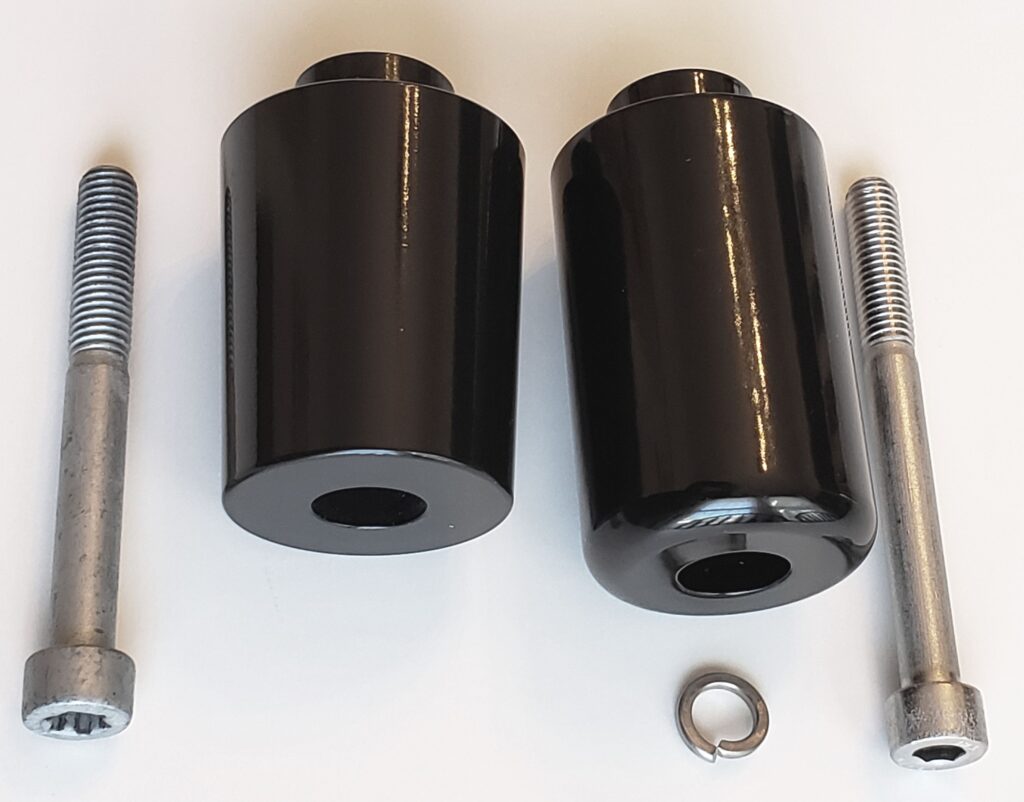
Constructed of solid stainless steel, each HVMP unit for the F 800 GT weighs in at 19.2 oz. with its stainless-steel mounting bolt (10mm hex instead of the original T45 Torx) and lock-washer (absent in the stock setup). This is 3 oz. – nearly 20% – heavier than the 16.2 oz. OEM components. The added weight comes with barely perceptible changes in exterior dimensions. The HVMP’s consistent diameter of 38 mm averages the tapered stocker’s 36-40mm width, and the HVMP’s (installed) visible length of 60 mm exceeds the stock unit’s by 10 mm. I opted for the fancier black version, but a basic brushed stainless-steel option is also available. The latter costs $82, the former adds $12 to the purchase price. Shipping is a flat rate of $11.50. I stumbled across a 10% discount code on the F800Riders forum, HVMP10; it’s valid for any customer. Compared to the stock bar-ends’ MSRP of $63.93, each (sans bolts), the HVMPs are a bargain, even at full retail with shipping.
Installation is a snap, involving nothing more than removing and replacing two bolts. Just be sure to put a dab of medium-strength thread-locking agent on the ends of the new fasteners before torquing them to 72 inch-lbs. You don’t want a pound of steel flying off your motorcycle at speed, and the whole reason for putting these things on is to deal with excessive vibration, the cause of much screw-loosening.
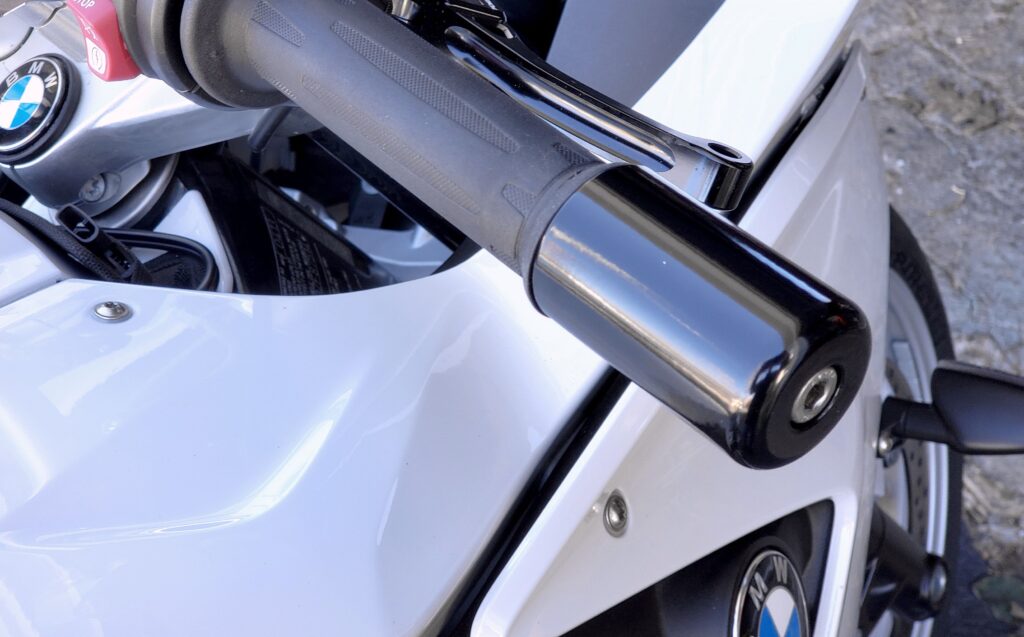
Enough with all the background – how do they work?! As mentioned in the first installment of this series, my F 800 GT in stock trim got buzzy at 4500 rpm, and this continued through much of the useable rev range up to 9000 rpm. With the HVMP bar-ends in place, the vibration intensity at 4500 rpm is reduced by about 50% (lower amplitude), by my subjective assessment, and seems even more attenuated as revs climb to redline. I expected vibration intensity to increase somewhere lower on the tach (the frequency reduction described above), and it may indeed be slightly worse between 4000-4500 rpm, but this so subtle as to be purely academic. In any case, this new peak is still considerably lower in amplitude than the old one, and it’s easy enough to drop a gear if I want to avoid cruising there. Whereas the old vibe peak would arrive right at prime cruising territory around 70 mph (in sixth gear) and contaminate anything faster, I can now select any speed without too much intrusion. I can still tell I’m riding a parallel twin; it’s not like all vibration has completely vanished, but I am no longer annoyed by it. I’ve experienced a substantial improvement in comfort, with less numbness, tingling and fatigue during an equal length of time droning on the highway. I consider this a big win, all for under $100 and 10 minutes of very easy installation.
Designed and manufactured in the USA, HVMP bar-ends are an excellent home-grown value. I highly recommend them for motorcycles with irritating vibration at the bars, although I can’t guarantee the results will be identical on other bikes. HVMP offers a 30-day, no-questions-asked, full-refund return policy, so you risk only the return shipping cost to find out how well they will perform on your particular application. It’s hard to imagine any situation wherein extra weight at a spring’s end has no effect; that’s just not how physics work.
Stay tuned for the next entry in this series as I seek to exorcise even more of this parallel twin’s handlebar-buzzing demons…
For more information or to purchase, visit hvmp.com.
Mark’s Operation Buzzkill series continues with part 3 next month! If you missed part 1, find out Mark’s take on Grip Puppies.

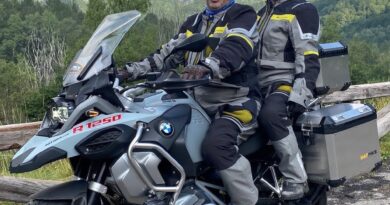
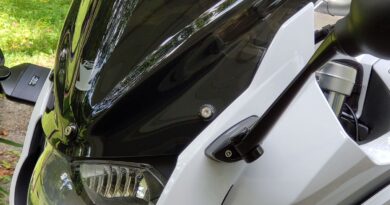
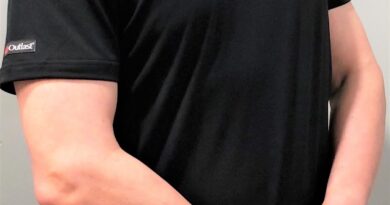
Mark, great to have you onboard with the club. Excellent and accurate article. I too have these bar ends on my 2016 R1200RT. I got the recommendation from Mosh K. Levy’s VBLOG. Hope to see you at this year’s Great Falls Montana rally.
Reece Mullins
BMWMOA VP
Pingback: Operation Buzzkill, Part 1: Grip Puppies - BMW Owners News